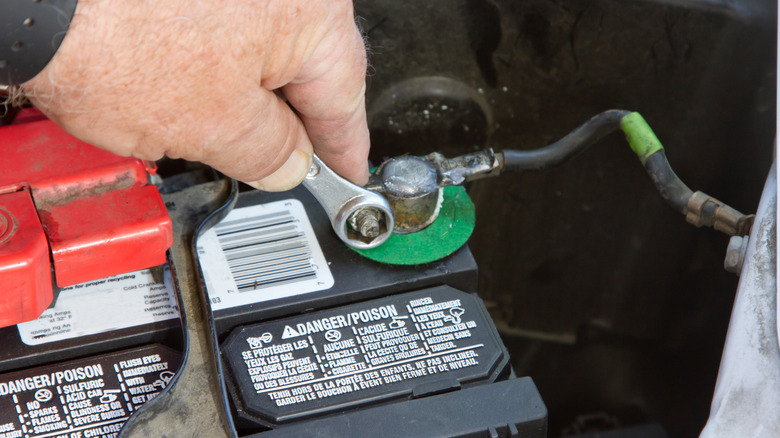
Swapping a car battery might seem like one of those basic maintenance tasks you can do blindfolded until sparks start flying, your stereo forgets who you are, and your car throws a tantrum. Most DIYers make one simple but critical mistake: not knowing which terminal to disconnect first. And no, this isn't just nerdy car trivia. Getting it wrong could erase vital data from the car's computer system, cause the car to idle and shift rough, or restart diagnostic checks to then light up the dreaded check engine light.
Now, cue the drum roll, spot the black wire, make sure it says "—" for negative and that's the one to remove first. But before you begin, turn off the ignition, keep the key aside, pop the hood, throw on gloves (corrosion doesn't care if it's your first time) and get a wrench, usually measuring between 8 and 10 millimeters. Want to save your radio presets and seat positions? Use a memory saver. Otherwise, enjoy setting the clock again like it's 1995.
 Chris Aschenbrener/Getty Images
Chris Aschenbrener/Getty Images
You always disconnect the black negative terminal first, because it is grounded to the car's entire chassis and body. Removing it first kills the circuit, which means if your wrench slips while you're loosening the red (positive) side, it won't spark fireworks or a fried electrical system. If you start with the positive terminal instead and your tool hits any part of the metal frame — congratulations, you've just built a short circuit. Cue blown fuses, or worse, a fire.
This is one of those "it's not just best practice, it's basic physics" scenarios. Electricity needs a path. Remove the ground first (the negative wire that's connected to the car's body), and you break that path. When it's time to install the new battery, you reverse the process — positive goes on first, negative goes on last. Get this wrong, and you're rolling the dice with your car's sensitive electronics. It's the same as hooking up the jumper cables — positive first then the negative, do it backwards, and it could cost you $200 in damage.
 Toa55/Getty Images
Toa55/Getty Images
Think pulling the red (positive) cable first is no big deal? Think again. Disconnecting the positive terminal while the negative is still grounded is basically asking for a high-voltage handshake. If your wrench touches the car's body while you're doing this, you could send a surge through the system that knocks out anything from your radio/infotainment to your car's computer.
Same with installing a new battery and reconnecting the terminals: positive first. If you connect the negative terminal first then, at best, you'll pop a fuse or spark like it's the Fourth of July. At worst, you'll toast your car's electrical system — and that's not cheap.
Before buttoning everything up, always check the terminals for corrosion and clean the battery terminals, snug down the clamps, and double-check your connections. One wrong move here doesn't just make for a bad day — it can make for an expensive one.














